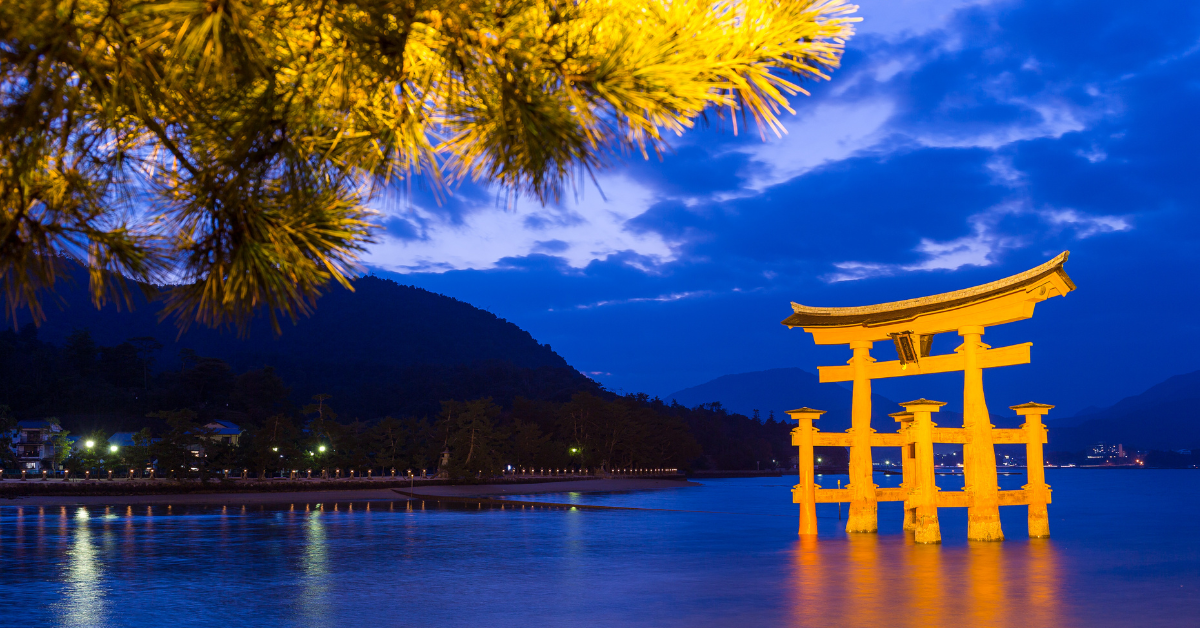Itsukushima Shrine has long captivated the Japanese people with its mystical appearance, seemingly floating on the sea. The perfect harmony between nature and architecture not only soothes the soul but also provides a glimpse into the heart of Japanese culture. This article explores how Japanese visitors perceive this sacred site, offering a thoughtful introduction for international travelers.
- Overview of Itsukushima Shrine and Japanese Reactions to Its Architecture
- A Sacred Space for Spiritual Healing
- Japanese Perspectives on the Shrine’s Meaningful Design
- A Living World Heritage and Local Pride
- Respecting Japanese Etiquette and Manners at the Shrine
- Tips for Enhancing Your Visit to Itsukushima Shrine
- Conclusion
Overview of Itsukushima Shrine and Japanese Reactions to Its Architecture
Itsukushima Shrine is famous for being a shrine that appears to float on the sea. Its structure changes dramatically with the tides, reflecting Japan’s cultural philosophy of living in harmony with nature. Japanese visitors admire this shifting scenery, viewing it as a natural expression of divine presence.
Here are key emotional responses and the cultural meanings behind them:
| Moment of Awe | Cultural Significance |
|---|---|
| The torii gate standing in the sea | A symbolic boundary between the human world and the sacred realm |
| The shrine buildings at high tide | Emphasis on harmony with nature and accepting change |
| The red architecture contrasted with nature | Traditional spiritual color with protective symbolism |
The vivid red torii gate is often described as “majestic and soul-stirring.” Visitors commonly report feeling a unique sense of purity and reverence in this sacred setting.
A Sacred Space for Spiritual Healing
For Japanese people, shrines are more than places to make wishes—they serve as spaces to realign the spirit. Surrounded by sea and forest, Itsukushima Shrine itself becomes an object of worship. Nature here is not merely scenery; it is considered divine.
Many visitors describe the space as quiet, pure, and different from everyday life. This peacefulness allows people to reflect and reconnect with their inner selves.
| Common Reflections | Underlying Spiritual Meaning |
|---|---|
| “It’s calm and soothing” | A space for introspection and mental reset |
| “The air feels different” | Based on the belief that nature embodies deities |
| “I want to visit again” | Seen as a spiritual refuge, not just a tourist spot |
These comments show how Itsukushima Shrine becomes a lasting emotional experience, not just a momentary visit.
Japanese Perspectives on the Shrine’s Meaningful Design
Japanese visitors often seek deeper meaning beyond visual beauty. They observe architecture, rituals, and layouts as interconnected with personal and cultural reflection.
Below is a table summarizing key structural elements and the values they represent:
| Shrine Element | Perceived Value |
|---|---|
| Covered corridors | Walking slowly invites mental calm and focus |
| Noh stage | Blends traditional performing arts with religious practice |
| Main worship halls | Offer sacred space for deep spiritual connection |
Each structure integrates seamlessly with nature. The interplay of light, shadow, tide, and breeze creates a scene that feels more like a living experience than a fixed monument.
A Living World Heritage and Local Pride
Though registered as a World Heritage Site, Itsukushima Shrine is not just preserved history—it is a living center of faith. Locals are deeply involved in maintaining and celebrating its presence.
One prime example is the annual Kangen-sai Festival, which features Heian-era court music played from boats. This tradition is sustained through local volunteerism and pride.
| Local Involvement | Cultural Role |
|---|---|
| Kangen-sai organization | Locals lead preparation and performance |
| Shrine upkeep | Daily cleaning and care by community members |
| Tourist support | Students offer guided tours in the area |
Because of this, the shrine continues to thrive not as a relic, but as a vibrant cultural institution shared between locals and visitors.
Respecting Japanese Etiquette and Manners at the Shrine
In Japanese culture, spiritual attitude matters more than outward appearance. Etiquette is not a formality, but a way to show sincere respect to the sacred.
Understanding and practicing these basics can deepen your connection with both the site and its people.
| Proper Behavior | Purpose |
|---|---|
| Bowing before passing through the torii gate | Acknowledges entering sacred space |
| Purifying hands and mouth at the water basin | Prepares body and mind for reverence |
| Taking photos respectfully | Shows consideration for others’ spiritual moments |
Also, shrines are meant to be tranquil. Avoid loud voices, phone calls, or running. Approach the experience with quiet mindfulness and dignity.
Tips for Enhancing Your Visit to Itsukushima Shrine
Here are practical tips to enrich your time at the shrine:
| Tip | Why It Helps |
|---|---|
| Check tide schedules before visiting | Scenery varies greatly between high and low tide |
| Visit early morning or at dusk | Fewer crowds, more spiritual atmosphere |
| Time your visit with a local festival | Gain deeper insight into living tradition |
Treat this not just as sightseeing, but as a spiritual journey—a perspective that transforms your experience into something more profound.
Conclusion
Itsukushima Shrine is not simply a historical site or tourist destination. To Japanese people, it is a spiritual anchor, a symbol of unity with nature, and a living cultural treasure. The shrine offers more than visual delight—it invites self-reflection, reverence, and connection across time.
For international visitors, approaching the shrine with awareness and respect opens the door to understanding Japan’s deeper values. Let Itsukushima Shrine be not just a place you visit, but one you remember—through feeling, reflection, and shared reverence.






